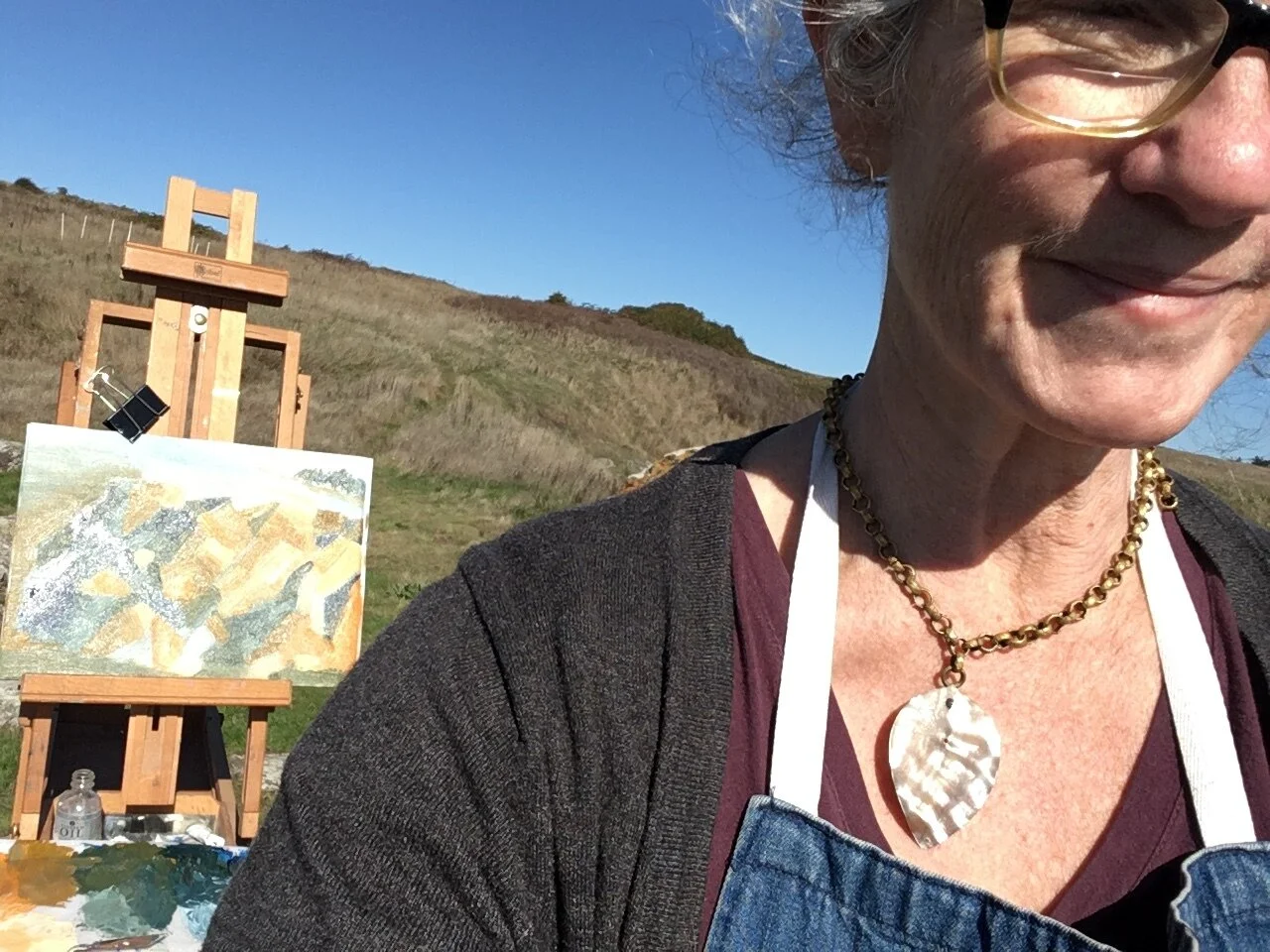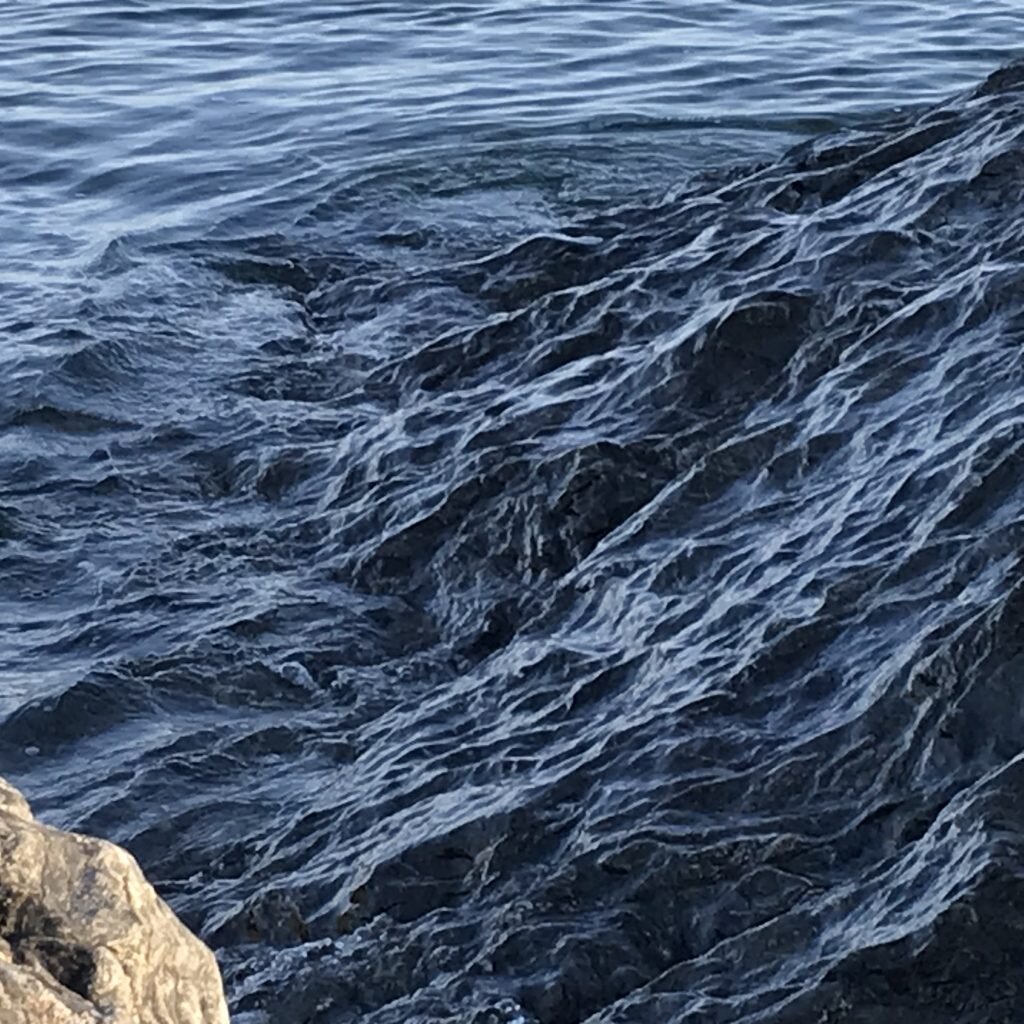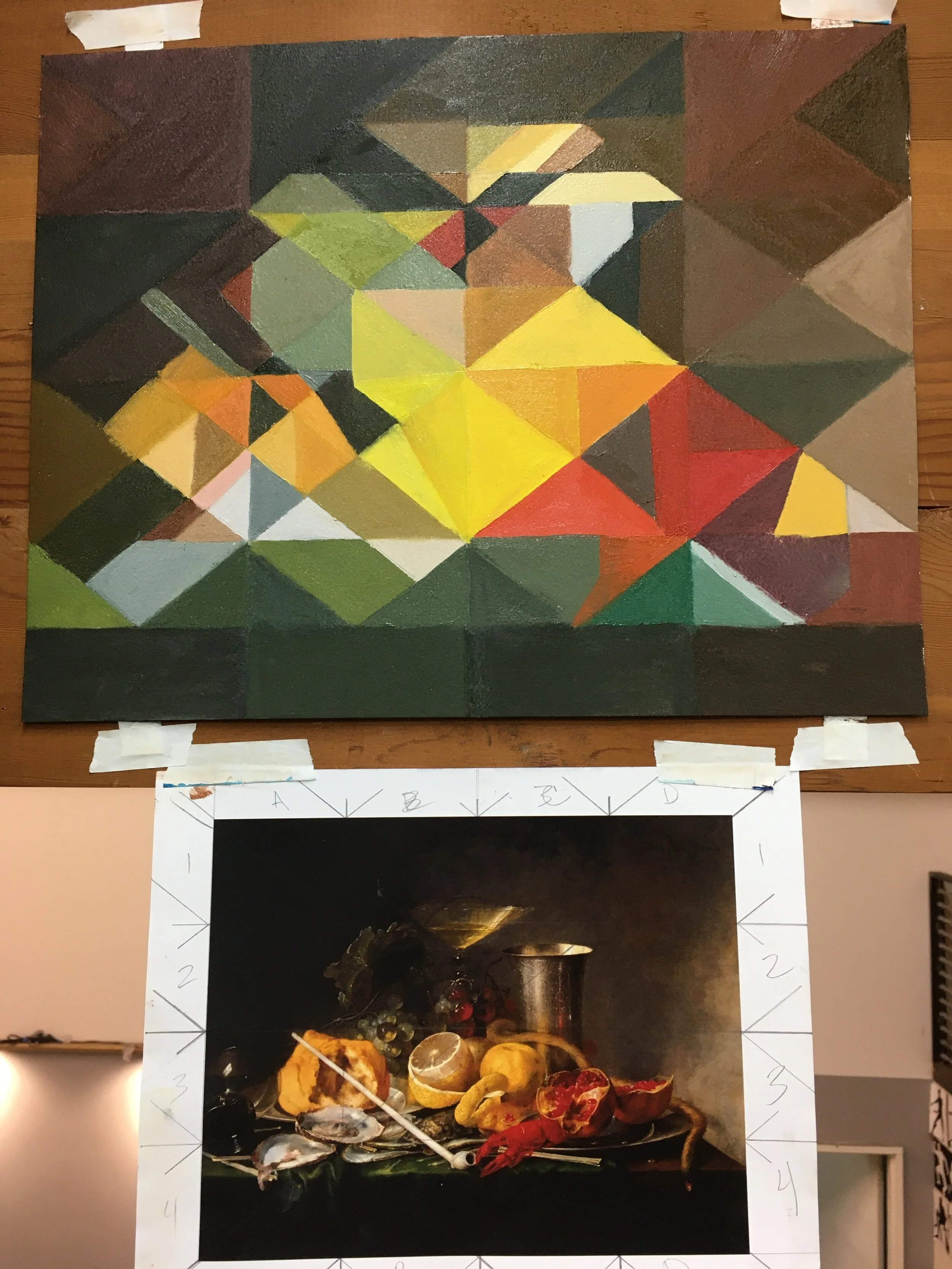Paint what you see? Bahahaha!
I went to paint at my favorite beach a while back, South Beach in American Camp/San Juan Islands National Historical Park – the most beautiful driftwood-strewn stretch of beach in the San Juan Islands.
What a shitshow!
Well, it’s always a shitshow – I’ve only painted outside about 7 times now, in the 3 years I’ve been painting. Hauling the stuff – getting the stuff – easel, box, paints, right sized paper, snacks, coffee, phone, iPad, gloves, scarf, sweaters, the list goes on.
It’s like I’m moving to the beach.
But it is also wondrous – relaxing, calming. I saw two people the whole time. I position myself on a bluff, and then figure out from the vast array of beauty spread before me – precisely which scene I will ruin!
You laugh! I laugh. But we all know that when you first start making art, drawing, painting, etc. that you may feel like I do – that I would apologize to the beautiful scene in nature I am about to attempt to capture and kill.
They say, “Paint what you see” – “Painting teaches you to see.” I’ve been trying to get my head around that. Because whatever I paint has absolutely no relation to what I actually see.
Let me explain.
Like you, when I go to the beach, or any natural place I love, I am captivated by how much there is to see. Here’s a selection:
I see a long stretch of grey-green beach spreading out to the bluish horizon.
I see sparkling water in ever-shifting wavelets, dotted by black dots of birds.
I see a million little twists & turns of branches and knots of trees in the piles of driftwood.
I see back-lit and front-lit and side-lit logs, dark and bright against greenish sand carpeted with pebbles.
I see a tapestry of white and pale green, yellow, orange, black lichen filligreed over every boulder’s surface, like aerial views of little cities with fields and forests. I see clumps of black seaweed, slumped on the sand, with twists of kelp stipe in ocher, green, gold, yellow, peach, covered in sandfleas when you step near, and when you hold them up to the light they glow like a unicorn’s tail.
I see a road of pebebles in a spectrum of color from pale peach to blood red to pale jade and every blue-grey imaginable. WAY more than 50 shades.
Stones from pea-sized to boulder, smooth as a baby’s skin or crusted granite covered in lichen as old as the last ice-age. Pebbles and boules streaked with white quartzite in the shapes of little letters and landscapes – I’m collecting the alphabet.
I see foam waves in a never-ending play with light – how a wave curls at the last moment and catches the sun behind it, including the curl with the glow of pale jadite.
I see boulders crashed by waves that have, over the millenia, been worn and softened into the form of the water itself, so you can’t tell the difference between the rock and the water, light catching both.
On the underside of boulders, I see colonies of gooseneck barnacles, their neat little beaks pointing skyward. They cluster in colonies, tiny condos all delicately painted in white and rose, with black trim. If you watch when the tide is out, a little beak with open slightly, reaching out its frilly tongue for some tiny snack.
I see the sun setting – it takes a few hours for the gnomons of driftwood to cast longer and longer shadows until the light spectrum is at its lowest angle and longest wave of electromagnetic frequency and we see orange and red spread out like a drive-in movie across the pale screen of driftwood huts built by patient parents and squirrely kids.
So when they say: Paint what you see – what do I do??
I have to choose – attempt the little interesting patterns, the larger scene – everything is a decision – all with pretty hilarious outcomes.
I set up my easel and decide on a motif. I hold up my little frame to frame the scene. I mix a few colors like my teacher taught me. I poke a shape here and there onto the canvas. And I laugh.
I laugh because I know that when I go to the beach and paint, nothing. NOTHING, not the color, the shape, the value – has any relation whatever to the scene or objects I actually see.
Maybe I take things too literally. In fact I know I do.
But what I THINK they are trying to say is:
Simplify DRASTICALLY what you see – in other words, DON’t see it. Paint the SIMPLEST form of the big shapes of light and dark or some color and shape kind of close to what you see.
Paint a picture of what you see.
I think the goal is to actually shut out 99 percent of what you ACTUALLY see, and generalize it – see COMPLETELY differently.
INTERPRET what you see into a new language.
Take color as another example:
I see dark black shadows, a subtle gradation from cool blue to warm peachy orange, shot through with wood grain and knots, etc.
I take that, simplify it, transform it by my imagination and physical limitations into a SYMBOL of what I see.
SYMBOL: A symbol, from Greek, symbolon, meaning sym – together and bol – to throw over or beyond – to throw together. A symbolon was a coin, shard or ticket used in Greek law. The symbolon was broken in two, like Laura Palmer’s heart necklace in Twin Peaks. Each person kept half to represent the agreement or hospitality of past meeting. When they met again, they had the symbolon that fit together to prove their connection.
DIABOL: Diaboloical – dia – two/apart/rift – in Latin Law, this meant “the position kept in court by someone who doubted the claim made by the other party” – hence, diabolical, devil.
So when I translate or interpret my scene on my canvas, I am bringing together two (or many) things, creating a symbol of the connection between me and the beach scene.
You can see where in my mind it is diabolical – a cruel joke that the Devil plays on me – getting me out there to paint something beautiful and it turning into a crazy painting that looks nothing like I wanted it to!
But here is where it gets interesting!
Say the word “Love” is a symbol for a whole range of complex sensations and emotions. In painting, drawing, in color theory, we have a symbolic language that we get to not only USE, but MAKE UP as we go from what we learn, what we see, our imagination, etc. into something new.
So we don’t “paint what we see.”
We paint what we choose to simplify, interpret,
run through our physical limitations,
our imaginative language and metaphor factory.What ends up on the canvas is a version of this.
A Symbol, a Sign, an Icon, an Index of the Referent.
Like a child,
I am learning a new language.
It starts like this: Say black, white, gray.
Say red, green, orange, blue.
.
It reminds me of a song we little Mormon kids learned – Our Primary Colors:
Our Primary Colors are 1, 2, 3. Red, yellow and blue.
Each has a message for you and me; each has a symbol, too
Red is for courage to do what is right.
Yellow for service from morning till night.
Blue is for truth in our thought and our deed.
We will be happy if this is our creed.Our Primary Colors, LDS Songbook
What they don’t tell you, and what I didn’t realize until I got older was that the simplicity of symbols gets complicated by what we see in the world – colors mix, primaries become complementaries, tertiaries, many shades of gray and light enter our lives. This is the beauty of it, too.
Color is a language that we use to interpret or capture what we see. Now that I am coming to learn that, I am a lot less frustrated that what I paint isn’t “What I see”.
Now I get to let the language of color grow in me, and the conversation between me and the landscape, my teachers, my paint, my artistic ancestors, develop as any conversation would – naturally and with many shifts. Bold strikes, mistakes, guffaws, gaffes, Freudian slips, bloopers, Spoonerisms, corrigendums, malapropisms and also insights, beauty and even poetry.
It is a journey through the dark threshold of self-discovery!











